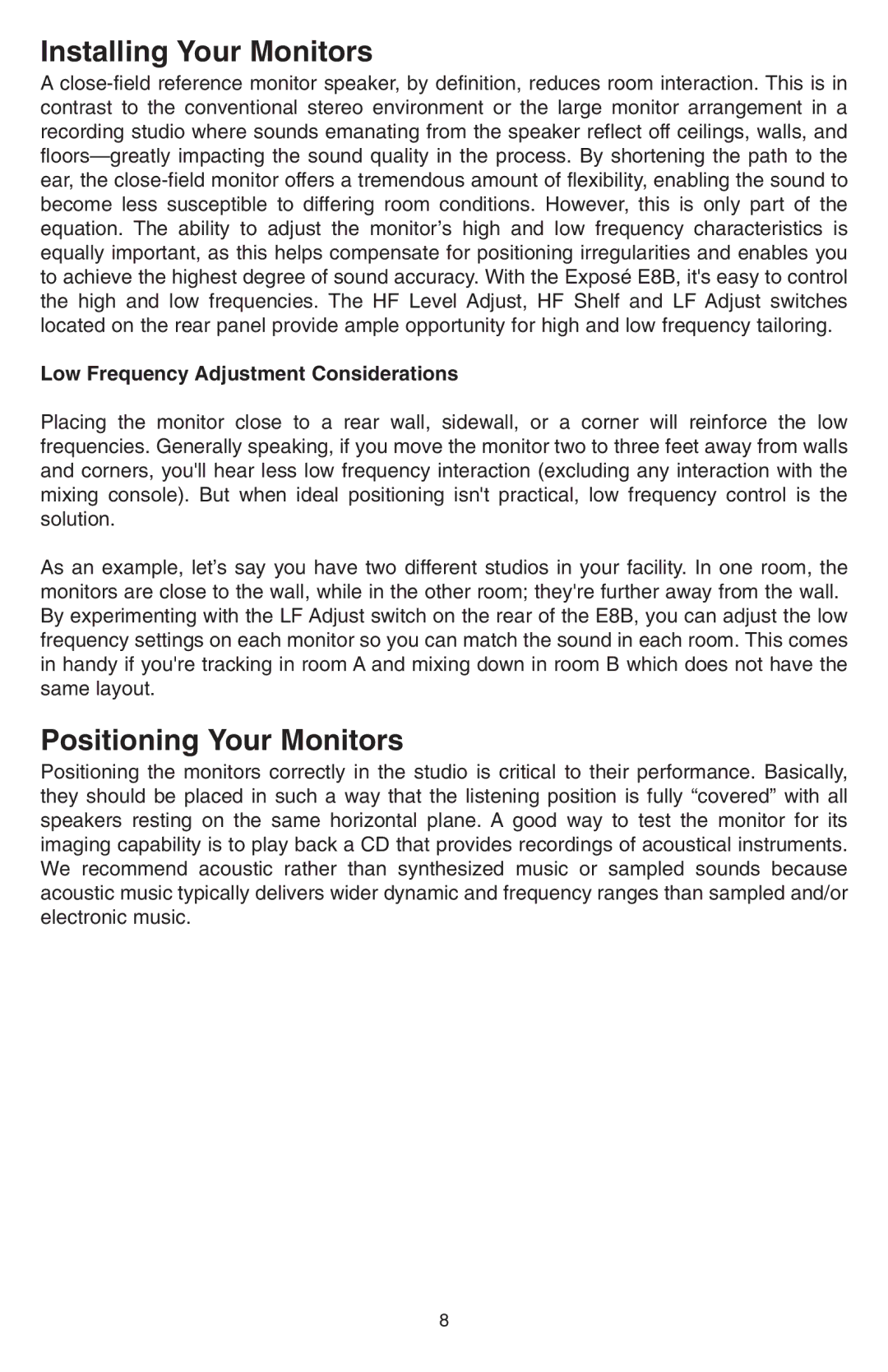Installing Your Monitors
A
Low Frequency Adjustment Considerations
Placing the monitor close to a rear wall, sidewall, or a corner will reinforce the low frequencies. Generally speaking, if you move the monitor two to three feet away from walls and corners, you'll hear less low frequency interaction (excluding any interaction with the mixing console). But when ideal positioning isn't practical, low frequency control is the solution.
As an example, let’s say you have two different studios in your facility. In one room, the monitors are close to the wall, while in the other room; they're further away from the wall. By experimenting with the LF Adjust switch on the rear of the E8B, you can adjust the low frequency settings on each monitor so you can match the sound in each room. This comes in handy if you're tracking in room A and mixing down in room B which does not have the same layout.
Positioning Your Monitors
Positioning the monitors correctly in the studio is critical to their performance. Basically, they should be placed in such a way that the listening position is fully “covered” with all speakers resting on the same horizontal plane. A good way to test the monitor for its imaging capability is to play back a CD that provides recordings of acoustical instruments. We recommend acoustic rather than synthesized music or sampled sounds because acoustic music typically delivers wider dynamic and frequency ranges than sampled and/or electronic music.
8
